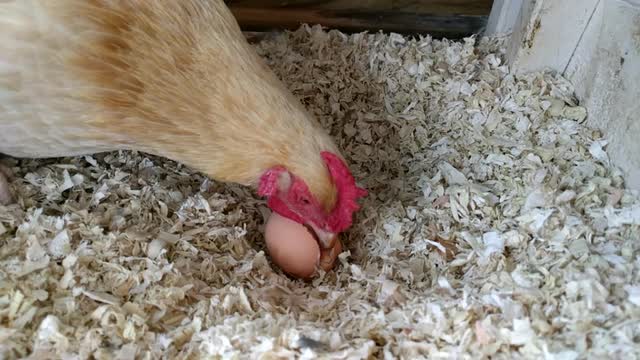

The other day I received a call from my manager over a problem I assumed I had solved once and for all. “The chickens are at it again,” manager stammered, and then his phone went off suddenly. I called him back. “What is the problem this time round?” I enquired, obviously irritated. “Are the symptoms of the disease the same as the others?”
In my mind, I was thinking that there was another outbreak of infectious coryza and mycoplasma, the two stubborn diseases that caused me plenty of trouble. “It is not a disease. The hens have started eating eggs again,” he muttered.
Now, if you recall, I have dealt with egg eating on more than one occasion. When it first occurred, I de-beaked the hens, but it persisted.
I then consulted veterinary experts who told me that this form of cannibalism is caused by several factors, ranging from crowding in the coop that leads to stress and nutritional deficiencies, particularly Vitamin D and calcium. Because I could do little about space, I decided to focus my interventions on nutrition.
From my research, I learnt that of the four natural sources of calcium, oyster shells (38 per cent) contain the highest amount of the mineral, followed by limestone flour (37 per cent), Dicalcium phosphate (22 per cent), and bone meal (22 per cent). Armed with this information, I decided to try a few things out.
THE BAD TASTE CURES THE BIRDS
First, I substituted the bone meal I had been using to make feeds with limestone flour. It didn’t work. I then changed to Dicalcium phosphate at double the amount of bone meal. Again, this did not work.
I further ground pepper and mixed with the contents of a crushed egg to make a creamy bitter liquid and gave the hens. Some researchers at University of Florida, US, had found that the bad taste cures the hens from the habit. This also did not work.
Out of desperation, I tried my farm manager’s idea of giving the hens bone meal or lime ad lib every morning before offering them feeds. The idea was that the hens would consume more calcium. It worked, to my relief. Later, when I consulted a vet, she told me, “During egg production, calcium needs for hens doubles and requirements must be increased to meet egg production and shell formation.”
But the offering of the limestone did not work for long and the hens resumed their bad habit. I queried manager, and realised where the problem was. “It was a lot of work giving the hens limestone separately from the feeds every morning, so I decided to increase the amount of lime in the 70kg bag from 1kg to 6kg,” he intimated.
OFFER THEM LIMESTONE EVERY MORNING
For a fact, I could not fault him entirely. During the feed formulation classes I run on the farm, I recommend 6kg of lime in a 70kg bag of layers mash. However, one thing I have come to learn the hard way is that sometimes what we read in the text books is not what works in reality. It is possible that the quality of limestone I buy does not contain adequate amounts of calcium. It is also possible that the mixing is not always homogenous.
Another possibility the vet told me was that it is important to achieve a 6:1 calcium to phosphorus ratio when formulating layers mash. “However, for calcium and phosphorus to work, they require Vitamin D that can be obtained either from ‘premixes’ sold in agrovets or absorbed from direct sunlight.”
For now, I instructed manager to offer the limestone ad lid every morning without fail, and as you can guess, the problem stopped.
“Never mix it with the food,” I warned him sternly.
 Contact Jaguza Support
Contact Jaguza Support